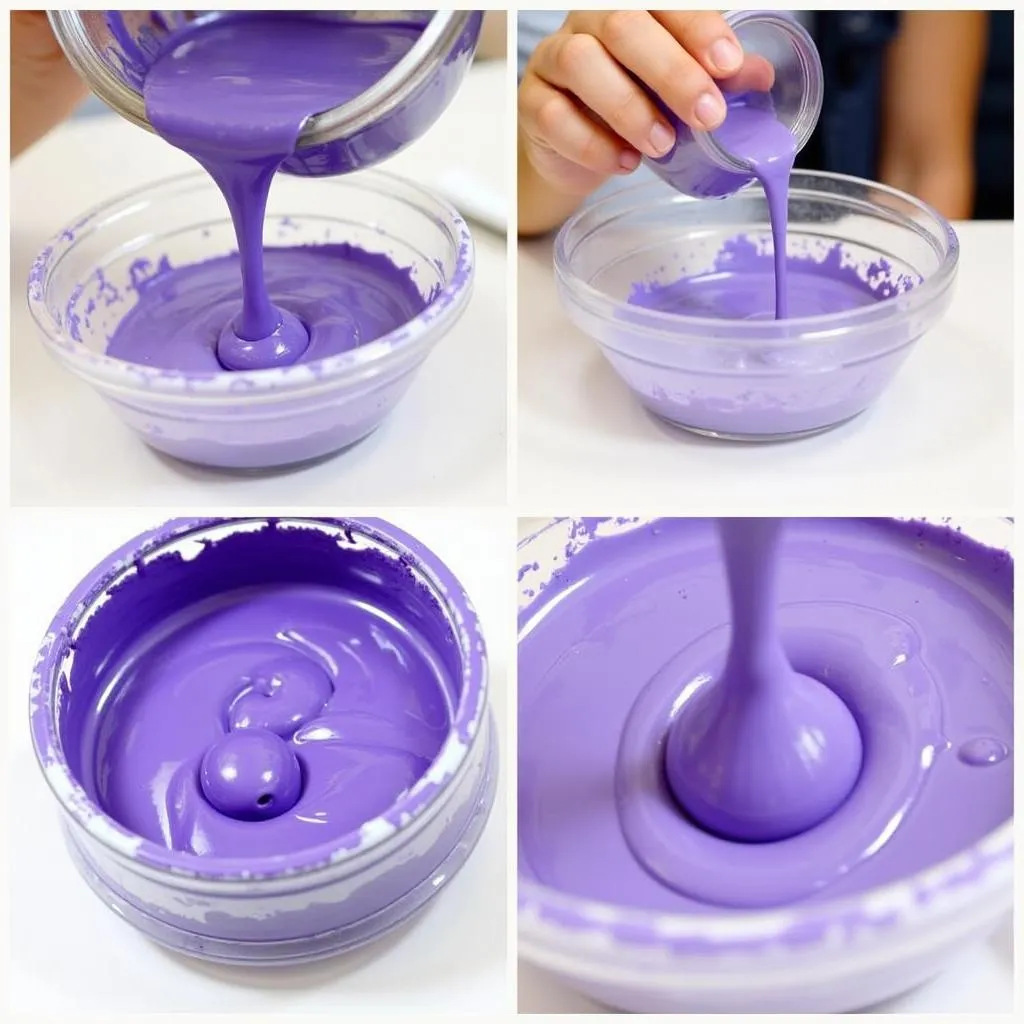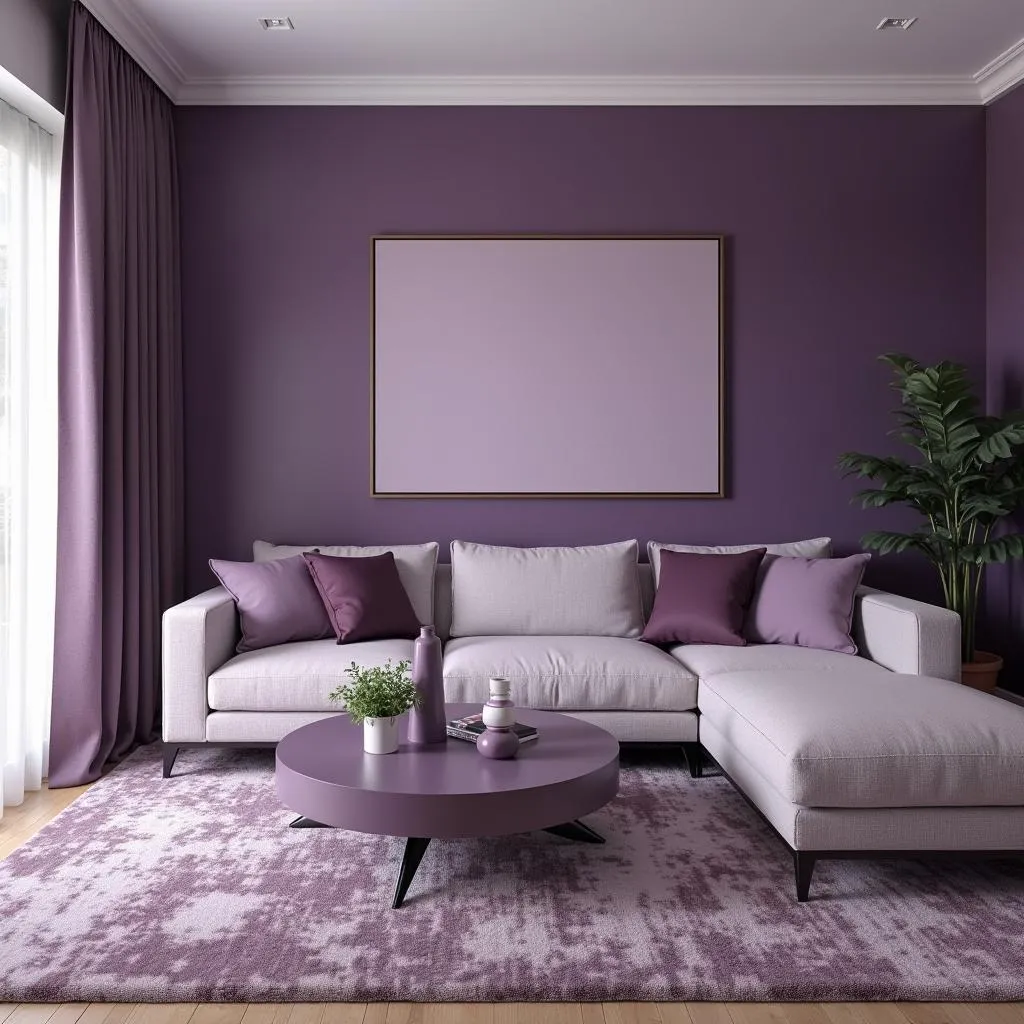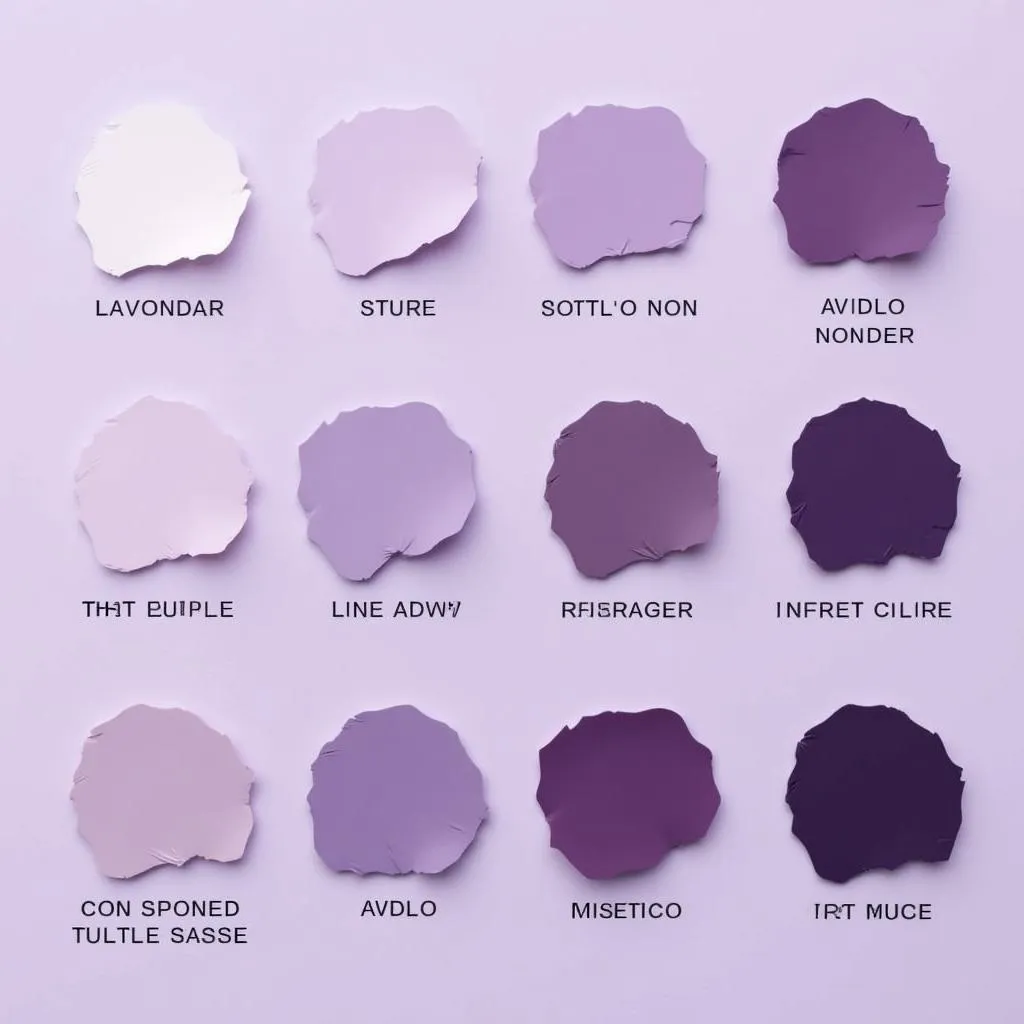Purple, the color of royalty, magic, and creativity, isn’t found on the traditional color wheel. This is because purple is a secondary color, born from the captivating blend of two primary colors: red and blue. But the world of purple extends far beyond this simple equation. The exact proportions of red and blue, as well as the influence of other colors, can create a mesmerizing spectrum of purple hues, each with its own unique character and charm.
Decoding the Red and Blue Ratio
The intensity and temperature of your purple depend heavily on the red-to-blue ratio. More red results in warmer purples, leaning towards vibrant magenta and fuchsia. These shades exude energy and passion. Conversely, a higher concentration of blue gives rise to cooler purples, such as indigo and lavender, evoking tranquility and serenity.
 Red and Blue Paint Mixing
Red and Blue Paint Mixing
Beyond the Basics: Expanding the Purple Palette
While red and blue form the foundation, other colors can be introduced to create even more intriguing purple variations.
- White: Adding white lightens purple, resulting in delicate pastels like lilac and mauve. These hues are perfect for creating a soft and romantic ambiance.
- Black: Incorporating black deepens purple, leading to rich shades like eggplant and plum. These hues add a touch of sophistication and mystery.
- Yellow: A touch of yellow can warm up purple, creating shades like orchid and amethyst. These hues bring a touch of vibrancy and optimism.
Practical Applications: Purple in Design
Understanding the nuances of purple color combinations unlocks endless possibilities for incorporating this captivating color into various design schemes.
-
Complementary Contrast: For a striking effect, pair purple with its complementary color, yellow. This high-contrast combination is visually dynamic and energetic. Imagine a vibrant sunflower yellow accent wall complementing a deep eggplant sofa.
-
Analogous Harmony: Create a sense of peace and tranquility by combining purple with its neighboring colors on the color wheel, blue and pink. This combination is ideal for bedrooms and bathrooms, where a serene atmosphere is desired. Think of a soft lavender wall color paired with dusty rose accents and blue-gray bedding.
-
Monochromatic Depth: Utilize various shades and tints of purple to add depth and dimension to a space. This approach creates a cohesive and sophisticated look. For instance, use a light lilac on the walls, a medium purple for curtains, and a deep plum for throw pillows.
 Purple Living Room Interior
Purple Living Room Interior
Tips from a Color Expert
“Don’t be afraid to experiment with purple!” says renowned color expert, Anya Sharma. “It’s a versatile color that can be both bold and understated, depending on how you use it. When choosing your purple hues, consider the mood you want to create in your space and the other colors you’ll be pairing it with.”
 Color Swatches with Purple Tones
Color Swatches with Purple Tones
Conclusion
Creating the perfect shade of purple is an art that lies in understanding the interplay of red, blue, and other influencing hues. By mastering the fundamentals and exploring different color combinations, you can unlock a world of possibilities and design spaces that reflect your unique style and personality. Whether you gravitate towards the vibrancy of magenta or the tranquility of lavender, there’s a perfect shade of purple waiting to be discovered.
FAQs
1. What colors make light purple?
Light purple hues, like lilac and lavender, are achieved by adding white to a base purple. The more white you add, the lighter and softer the shade becomes.
2. How do I make purple less dull?
If you find your purple lacking vibrancy, try adding a touch of its complementary color, yellow. This will create a pleasing contrast and make the purple appear more lively.
3. Can I use purple in a minimalist design scheme?
Absolutely! Opt for a muted or grayish purple, like mauve or heather, and pair it with plenty of white or light neutrals. This will create a calm and sophisticated minimalist aesthetic.
4. What’s the difference between violet and purple?
While often used interchangeably, violet technically refers to a specific spectral color with its own wavelength, whereas purple is a broader term encompassing various shades achieved by mixing red and blue.
5. Can I mix purple paint with other colors?
Yes, you can experiment with mixing purple paint with other colors to create unique shades. However, it’s crucial to test the mixtures on a small scale before applying them to a large area.
For more insights on color combinations and style tips, explore our related articles:
Ready to transform your space with the magic of purple? Contact Color Box Hanoi at 0373298888 or [email protected]. Our expert team is available 24/7 to provide personalized color consultations and help you create your dream space. Visit our showroom at 86 Cầu Giấy, Hà Nội, and embark on a colorful journey with us.

